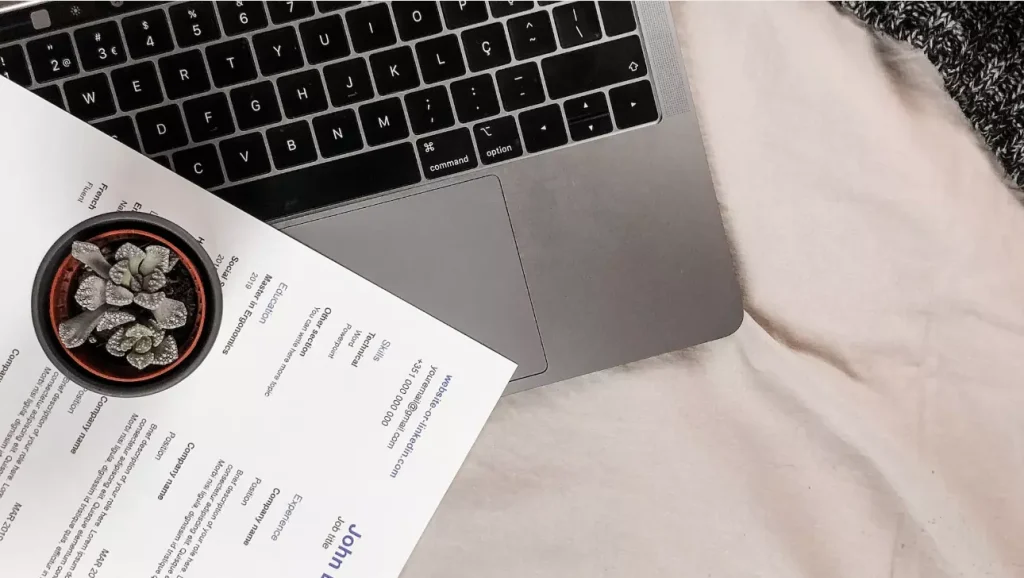Table of Contents
Introduction:
Writing a resume can be a daunting task. With so much competition in the job market, it is crucial to have a resume that stands out and gets noticed by hiring managers. A well-crafted resume can be the key to securing an interview and ultimately landing the job of your dreams. In this blog post, we will discuss the essentials of writing a resume that gets noticed.
Crafting a Resume That Gets Noticed: A Step-by-Step Guide
This comprehensive guide will take you through the steps of creating a compelling and attention-grabbing resume.
- : Your resume is a marketing tool designed to showcase your qualifications, skills, and experiences. Before you start writing, define your career goals and understand what you want your resume to achieve.
- : Select a resume format that best suits your background and career goals. Common formats include chronological, functional, and combination (hybrid) resumes. Each has its own advantages, so pick the one that highlights your strengths.
- : Your resume header should include your name, contact information, and a professional email address. Avoid using unprofessional email handles.
- : Compose a brief but impactful summary or objective statement. This section should provide a snapshot of your skills, experience, and career goals. Tailor it to the specific job you’re applying for.
- : In the experience section, list your previous jobs in reverse chronological order. Use bullet points to detail your accomplishments, responsibilities, and achievements. Quantify your achievements whenever possible to demonstrate your impact.
- : Create a separate section to highlight your key skills. Include both hard skills (e.g., software proficiency) and soft skills (e.g., communication, leadership). Use keywords relevant to the job you’re pursuing.
- : List your educational background, including degrees, institutions, graduation dates, and relevant coursework or honors. If you’re a recent graduate, your education section can be placed higher on the resume.
- : Depending on your background and the job you’re applying for, consider including additional sections such as certifications, languages spoken, publications, or volunteer work. These can set you apart from other candidates.
- : Customize your resume for each job application. Analyze the job description to identify keywords and skills sought by the employer. Incorporate these into your resume to demonstrate a strong fit for the role.
- : Start each bullet point with a strong action verb. Describe your accomplishments in a way that highlights the results you achieved. This makes your resume more impactful and results-oriented.
- : Ensure your resume is easy to read. Use a clean, professional font and maintain consistent formatting throughout. Use bullet points and headings to organize information.
- : Typos and errors can diminish the impact of your resume. Proofread it carefully, or consider asking a friend or professional for feedback. A flawless resume makes a strong impression.
- : In creative industries, design matters. Create a visually appealing resume that showcases your creativity and attention to detail. However, ensure it remains professional and easy to navigate.
- : A well-crafted cover letter complements your resume. Use it to introduce yourself, explain why you’re the right fit for the job, and demonstrate your enthusiasm for the role and company.
- : Limit your resume to one or two pages, depending on your experience. Employers often appreciate concise, focused resumes that quickly convey your qualifications.
FAQs about How to Write a Resume That Gets Noticed:
1. What is the purpose of a resume?
The purpose of a resume is to showcase your skills, qualifications, and experiences to potential employers. It serves as a marketing tool to present yourself as the ideal candidate for a particular job.
2. How long should a resume be?
Ideally, a resume should be one or two pages long. It is important to keep it concise and relevant, highlighting only the most important information.
3. What sections should a resume include?
A standard resume should include the following sections: contact information, professional summary or objective, work experience, education, skills, and additional relevant sections such as certifications, languages, or volunteer experience.
4. How should I format my resume?
Choose a clean and professional format that is easy to read. Use consistent fonts and bullet points to organize information. Avoid using fancy designs or graphics that may distract the reader.
5. Should I customize my resume for each job application?
Yes, it is recommended to customize your resume for each job application. Tailor your skills and experiences to match the requirements of the position you are applying for.
6. What should be included in the professional summary or objective?
The professional summary or objective should provide a brief overview of your background, skills, and career goals. It should capture the attention of the reader and entice them to continue reading your resume.
7. How important is the work experience section?
The work experience section is one of the most important sections of a resume. It showcases your relevant experience and achievements, demonstrating your ability to succeed in the desired role.
8. How should I list my skills on a resume?
List your skills in a separate section, highlighting both hard and soft skills relevant to the job. Use concise bullet points or brief phrases to clearly communicate your abilities.
9. Should I include references on my resume?
It is not necessary to include references on your resume. Instead, you can mention that references are available upon request. Save the space on your resume for more important information.
10. How can I make my resume stand out from the rest?
To make your resume stand out, focus on quantifying your achievements, provide specific examples of your accomplishments, and use action verbs to describe your experiences. Additionally, tailor your resume to the job description and use keywords that match the requirements of the position.
:
Writing a resume that gets noticed requires attention to detail, customization, and effective presentation. By following the guidelines discussed in this blog post, you can create a compelling resume that highlights your skills and experiences, grabs the attention of hiring managers, and increases your chances of securing interviews. Remember to continuously update and tailor your resume as you progress in your career and apply for new opportunities. With a well-crafted resume in hand, you will be well on your way to achieving your professional goals.
Buildfreeresume.com has a consumer rating of 4.83 stars on Sitejabber.




